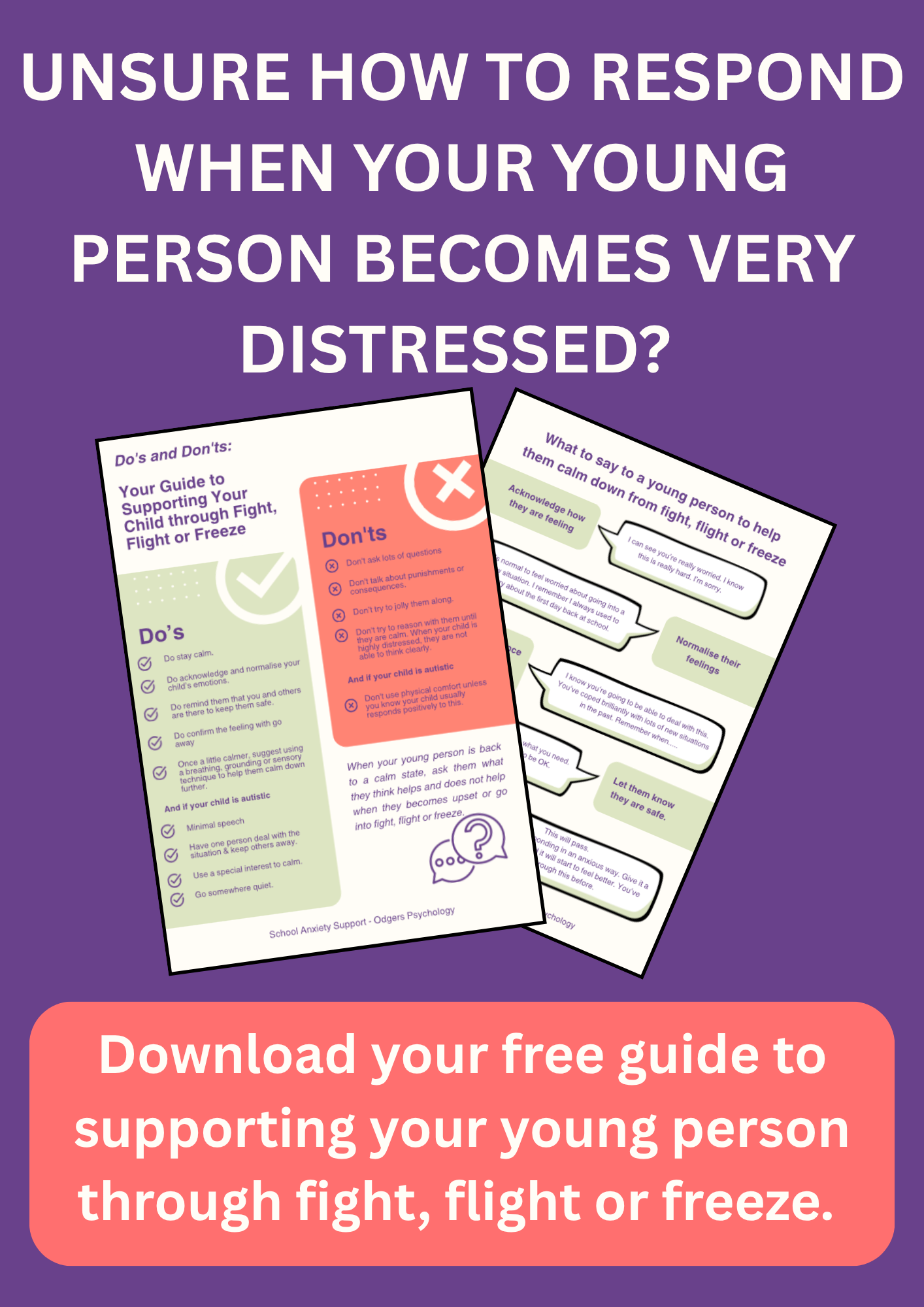Tips to find out what your child is worried about at school
Sep 11, 2023
Some children and young people can explain in great detail what worries them at school, but many others struggle to clearly articulate their fears. When adults don’t know what young people are worried about, it’s hard for them to know what kind of support needs to be to put into place.
Below is a very simple strategy you can use if your child is finding it difficult to explain to you or school staff what they are worried about.
Explain to your child that you want to know how scared they are in different situations on a scale of 1 to 5, where:
- 1 means they are totally calm
- 2 means they are a little worried
- 3 means they are worried
- 4 means they are very worried
- 5 means they are in total panic.
You can download a visual support to use with your child in this exercise by clicking on this link.
Then get out their school timetable. Using the visual scale, ask them how worried they feel each point of the timetable. Make sure you include immediately before school starts, break times and lunchtimes as you do this. Make a note of what your child says as you’re unlikely to remember it all afterwards.
As your child goes through the timetable, it’s common for them to identify some parts of the day when their anxiety is higher and other parts of the day when their anxiety is lower.
It’s worth asking questions to check you have understood correctly. For example, “It looks like you’re more worried in maths that English. Have I got that right?”
After they have given their rating, you can ask follow-up questions to encourage them to explain themselves further. For example, “You’ve rated PE at 5. Can you tell me what is it about PE that worries you?” (Children often find it difficult to answer “why” questions, and you can often get more information out of them by asking “what” questions instead.)
If they are finding it difficult to explain what makes them feel so worried you might offer some gentle suggestions but make sure you check out if you are right. For example, “You’ve rated yourself at 5 for break time. Some people get worried at break time because the playground it too noisy and busy. I’m wondering if that’s the case for you. Am I right?” If they agree, great, you’ve hit the nail on the head. If they don’t, you can offer a different suggestion. “Other kids don’t like playground because they are worried about being alone. Is that something you’re worried about?”
This approach can be very effective even with children who are too worried to talk about their fears because they can show how they feel by just pointing to the visual and by nodding or shaking their head in response to adult questioning.
Not only does this approach help to identify your child’s worries, but it can also help to identify what might be going well for your child in school. It’s common to discover that a child has worries that focus on one or two key issues (for example, writing and making mistakes) but that they still enjoy aspects of their life in school, such as spending time with their friends at break and lunch.
Not all children will respond positively to this approach, but for those that do, it can be a great way to start a difficult conversation and help them to open up about their fears.
Come Along to My Next Masterclass!
Six Simple Steps to Help Your Child Through Fight, Flight or Freeze - A One Hour Masterclass for Parents of Children Aged 6 to 16 with School Anxiety.
Feel calm, confident and connected when your child panics before school or has an after-school meltdown.
Date: 2nd December 2025.
Time: 8pm to 9pm.


